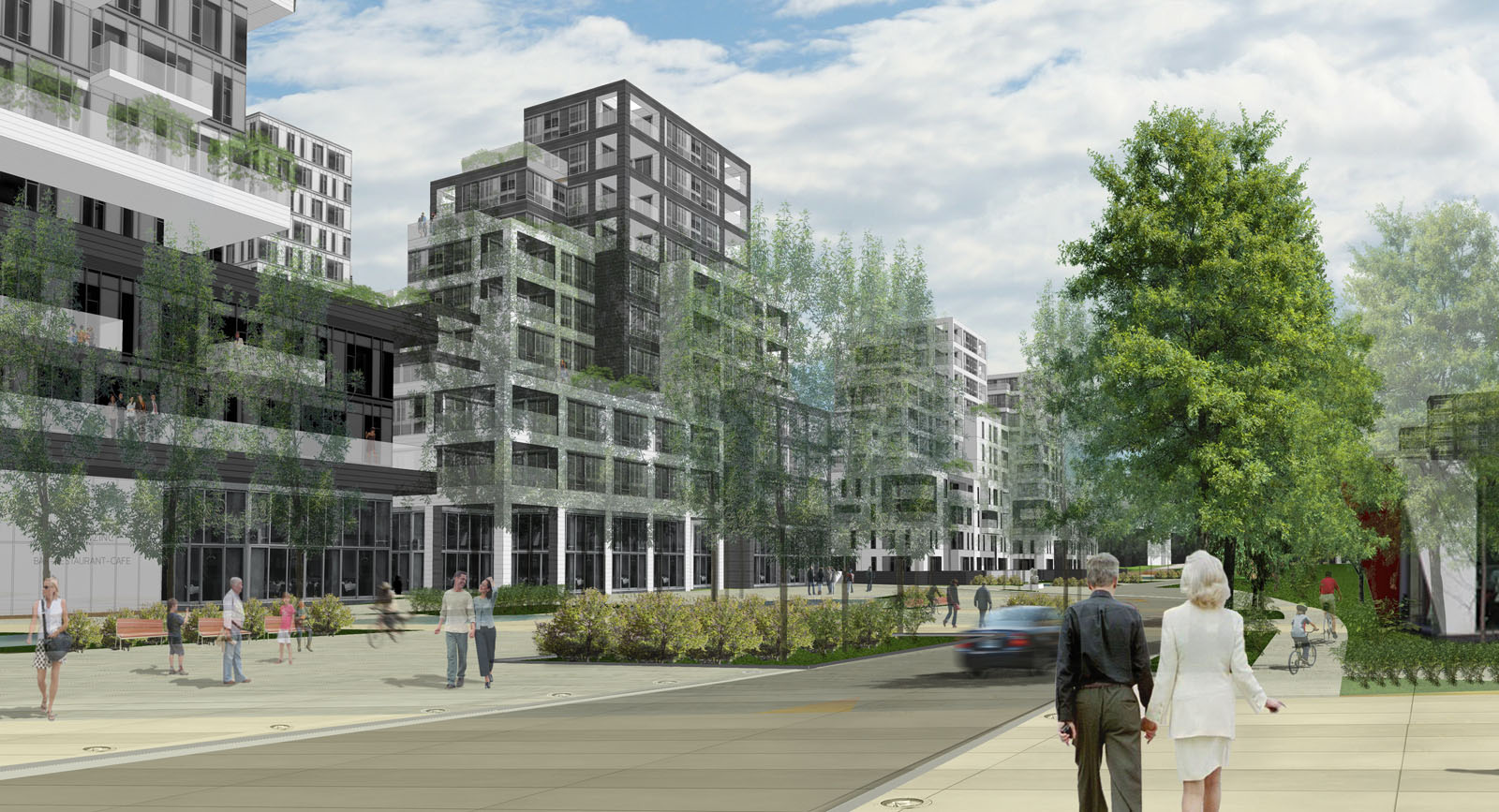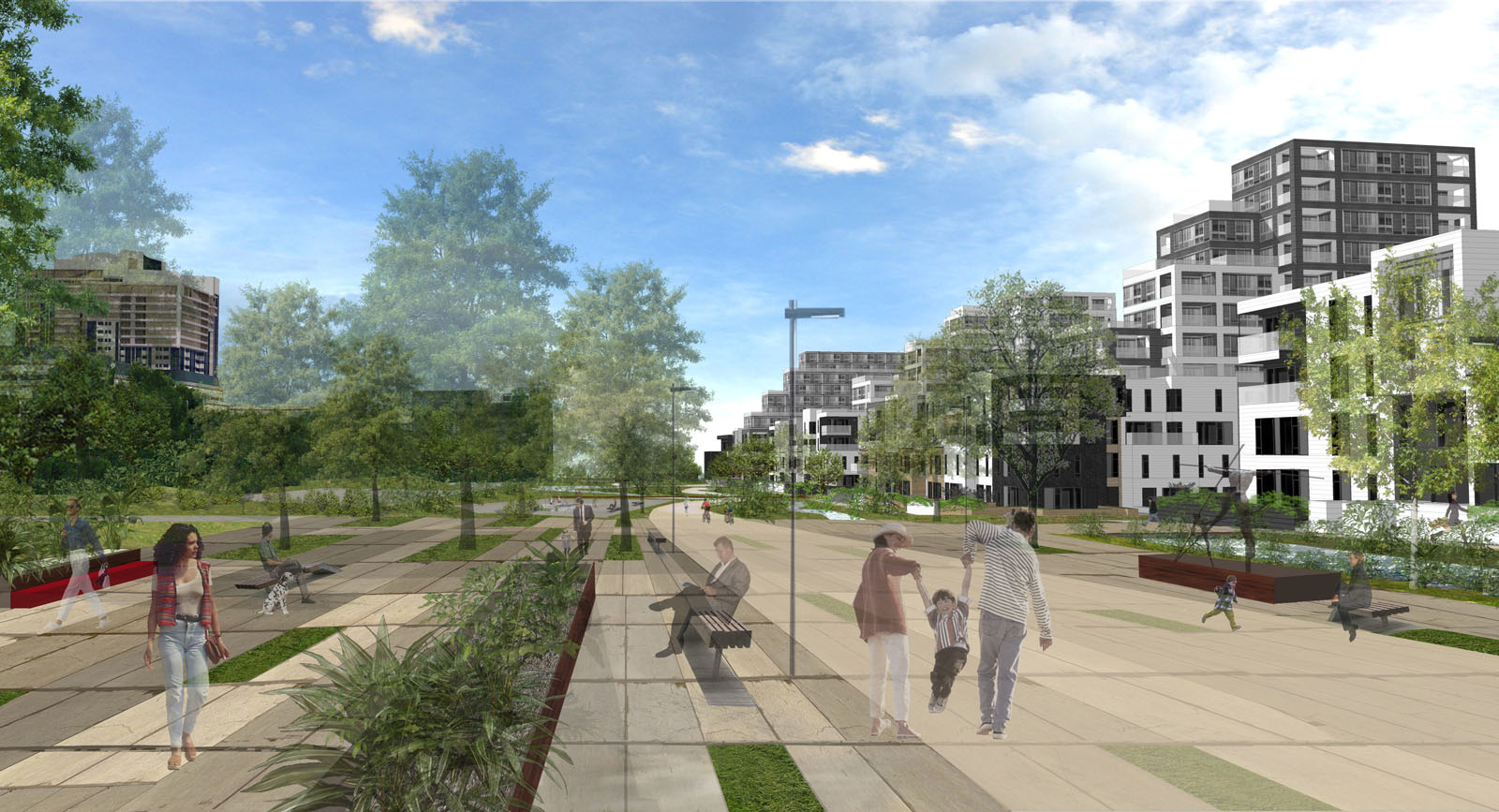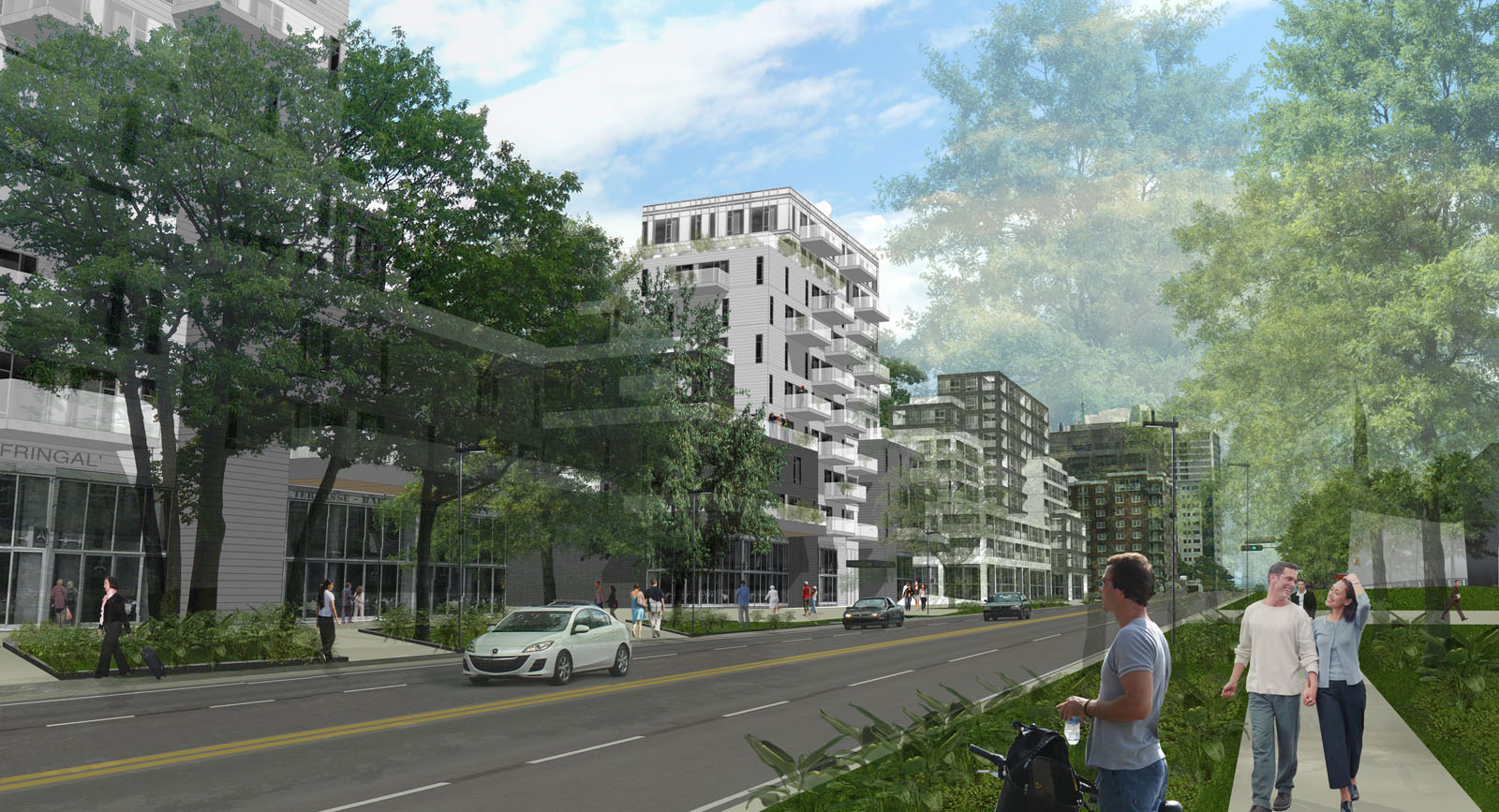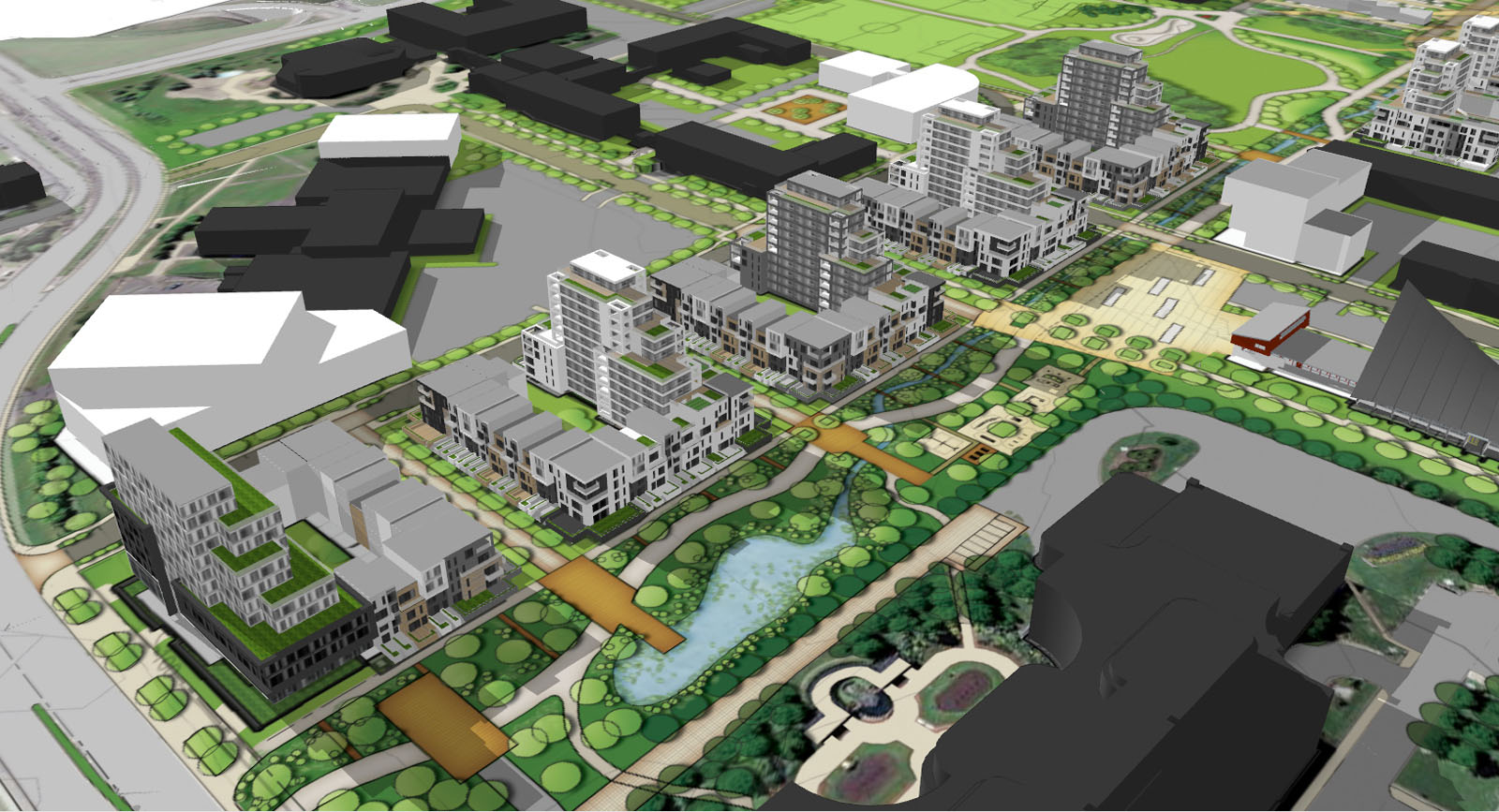Development Study of the Route de l'Église / Rochebelle area
Ville de Québec

Category
Master planning , Plot requalification , Public spaces and parks
Client
Ville de Québec
Location
Quebec (Québec) / Canada
Date
2011
Budget
-
Area
-
Credits
ABCP architecture
Images © ABCP architecture
Description
By mandating the ABCP firm, Quebec City was seeking an expertise to establish the parameters to guide the development of the major centre of Sainte-Foy (CMA) activities, mainly on the axis of Route de l’Église and Rochebelle campus. This 'new' downtown close to the "gateway" West of the city is conducive to implantation of large scale buildings, intrinsically related to a dynamic business centre which must also combine the residential use and lend themselves to a smooth gradation to areas of low density devices.
In pursuit of an earlier study, also conducted by ABCP, the possibility of serving this part of the city by the tram was to propose a development focused on sustainable mobility and alternative development. By producing urban and volumetric analyses to targeted arteries, ABCP work was designed to guide the city through mentoring of development proposals that will be presented in the future on the outskirts of these axes, subject to great pressures of densification. The purpose was to provide an overall vision innovative, high-quality and exemplary of the potential of development through urban and microclimatic analysis thorough sites to assess the impact on the community. Great attention to the establishment and qualification of public spaces was guiding the approach so that a great attention to the control of the masses of shadows on the built environment and public spaces have conditioned an innovative architectural typology.





